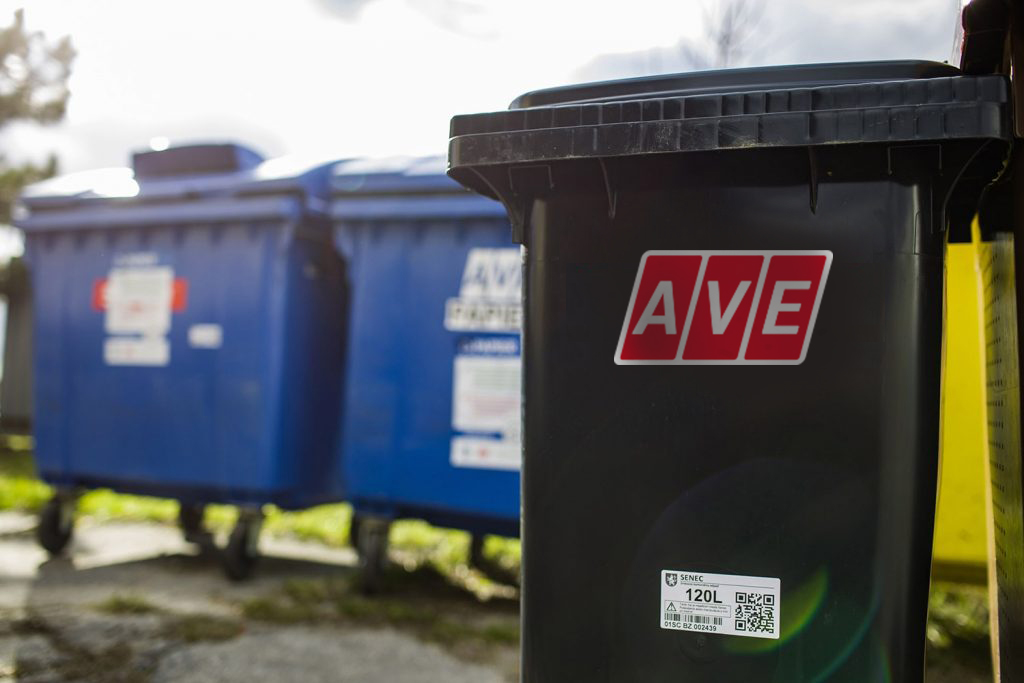How to efficiently process waste? There is the potential for huge money savings
Today’s consumption times are associated with the production of an increasing volume of waste.
Finding a suitable place to dump waste is becoming more and more difficult, and waste management is becoming quite expensive. One solution is to introduce a more accurate overview of what is being collected and when, and at the same time motivate the population to sort waste with fair fees and thus significantly help its recycling.
In the following article we discuss the ESONA system developed by the Slovak company MIM. The solution “from the workshop” of its experts is successfully used by the city of Senec and further implementations are being prepared for other towns and villages in Slovakia.
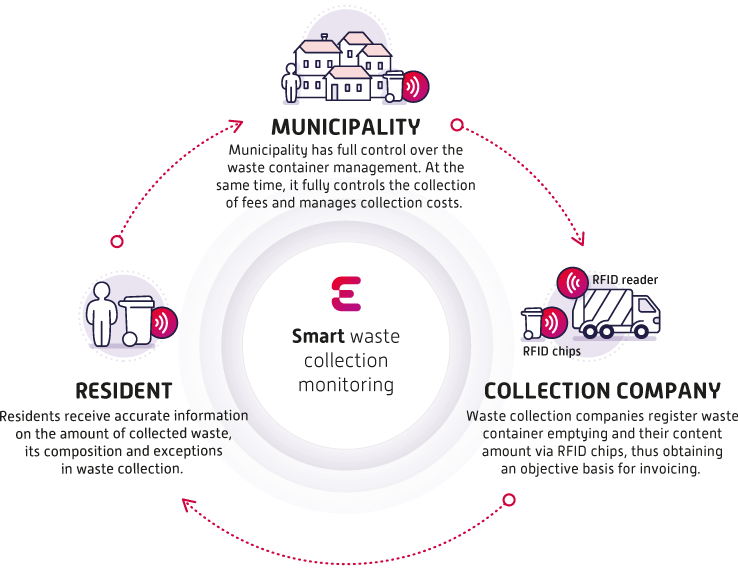
Bulk collection and price for waste
According to a recently published study by the Institute of Environmental Policy (IEP) at the Ministry of the Environment of the Slovak Republic, bulk collection in Slovakia significantly reduces the mixed municipal waste generation and increases the sorting rate. Thus, by introducing it, towns and villages could save considerable sums on ever-increasing landfill fees.
At present, the price for waste disposal in Slovakia is many-fold lower compared to foreign countries. In Slovakia, the average price is EUR 25 per 1 ton, in other EU countries the average price is EUR 60 to 120 per 1 ton of mixed municipal waste. Gradually, however, prices in Slovakia and other European countries will level off and there is a strong assumption that average prices for the disposal of mixed municipal waste will increase throughout Europe.
A detailed analysis of municipal waste generation data for the period 2010 – 2018 shows that the introduction of bulk collection in combination with waste collection monitoring (e.g. through tokens, barcodes and QR codes, or RFID chips) reduces the amount of mixed waste in municipalities by almost 31%. The sorting of plastics is on average 15% higher for the type of fees dependent on waste collection, and the sorting of glass is higher by 9%.
The IEP study also presents the experience with the ESONA system implementation in the above-mention city of Senec.
The weight of mixed waste dumped to a landfill in Senec decreased in half a year by up to 600 tons and, at the same time, separation of all other waste components increased significantly in the given period.
More about the ESONA system and its deployment in Senec can be found in the program World of Technology on TA3.
Legislative pressures to reduce waste production is one of the reasons for towns and villages to use a smart system for targeted registration and management of waste containers and fee payers with a link to collecting from individual containers. This will provide the required control, overall process optimization and help reduce the hidden costs of waste collection and disposal.
How does it work?
The individual waste containers are registered in the system and marked with a special tag with an RFID chip. It carries information about the volume of the container and the type of waste. Each container is assigned a unique identifier and an associated payer in the database. ESONA supports different volumes and types of waste containers, as well as different types of waste, e.g. mixed municipal waste, paper, plastics, glass, metals, etc.
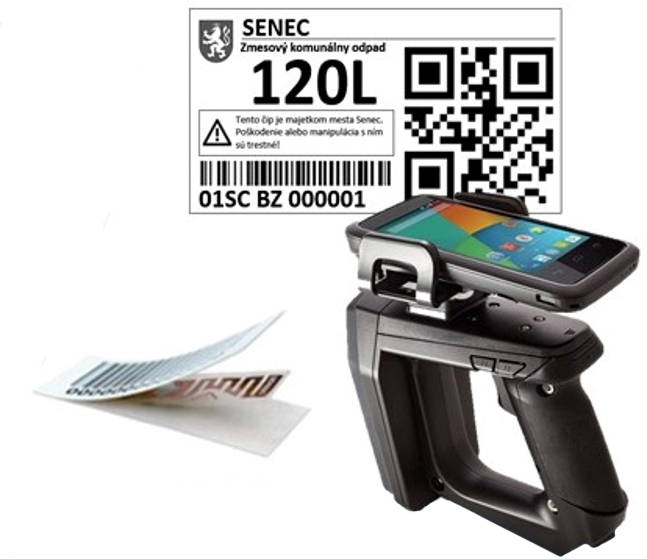
Manual RFID reader
Checking the registration of waste containers is carried out at each waste removal, as when emptying the waste container, the data on its processing is recorded in the central database. All you have to do is simply bring the container closer to the reader located in a suitable place on the collection vehicle. Data on the date and time or the filling status of the container (1/4, 1/2, 3/4, 1, and 1 + extra bags) are recorded. Furthermore, the GPS coordinates of the waste collection are recorded for each emptied waste container. For waste collection companies, such data can be the basis for effective route planning in waste collection, i.e. in the so-called routing. Such information is particularly beneficial in new and growing regions.
Smart waste collection monitoring
The ESONA system is built comprehensively, it helps to solve the waste agenda and provides information for all entities involved in the process.
Benefits for towns and villages
The work is based on an online web application for employees of the town or municipal authority. Using the application allows recording and processing the obtained data on waste containers associated with given fee payers. A mobile application is intended for field work, using which allows carrying out an inventory of waste containers.
The information obtained will bring towns and villages the following:
- Accurate and targeted registration of waste containers, , which also results in the elimination of illegal users (i.e. unregistered waste producers),
- Quick identification of irregularities in the process of waste registration and collection,
- Targeted billing of payments for waste based on real collection,
- Motivation for fee payers to separate waste,
- Significant reduction in fees for waste collection, disposal or landfilling.
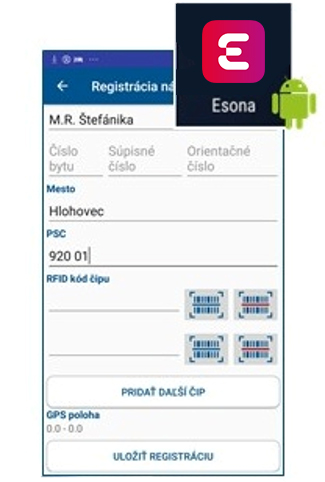
ESONA mobile application (picture)
Residents and organizations have their waste containers marked with electronic RFID chips, which are used to identify waste collections. They can use the Client Portal containing all the information about the collection status of their container and the problems encountered during waste collection. The zone for fee payers also includes information on the levied amount of the waste fee, together with data on payment and a clear status of waste fee payments. All information related to municipal waste is in one place.
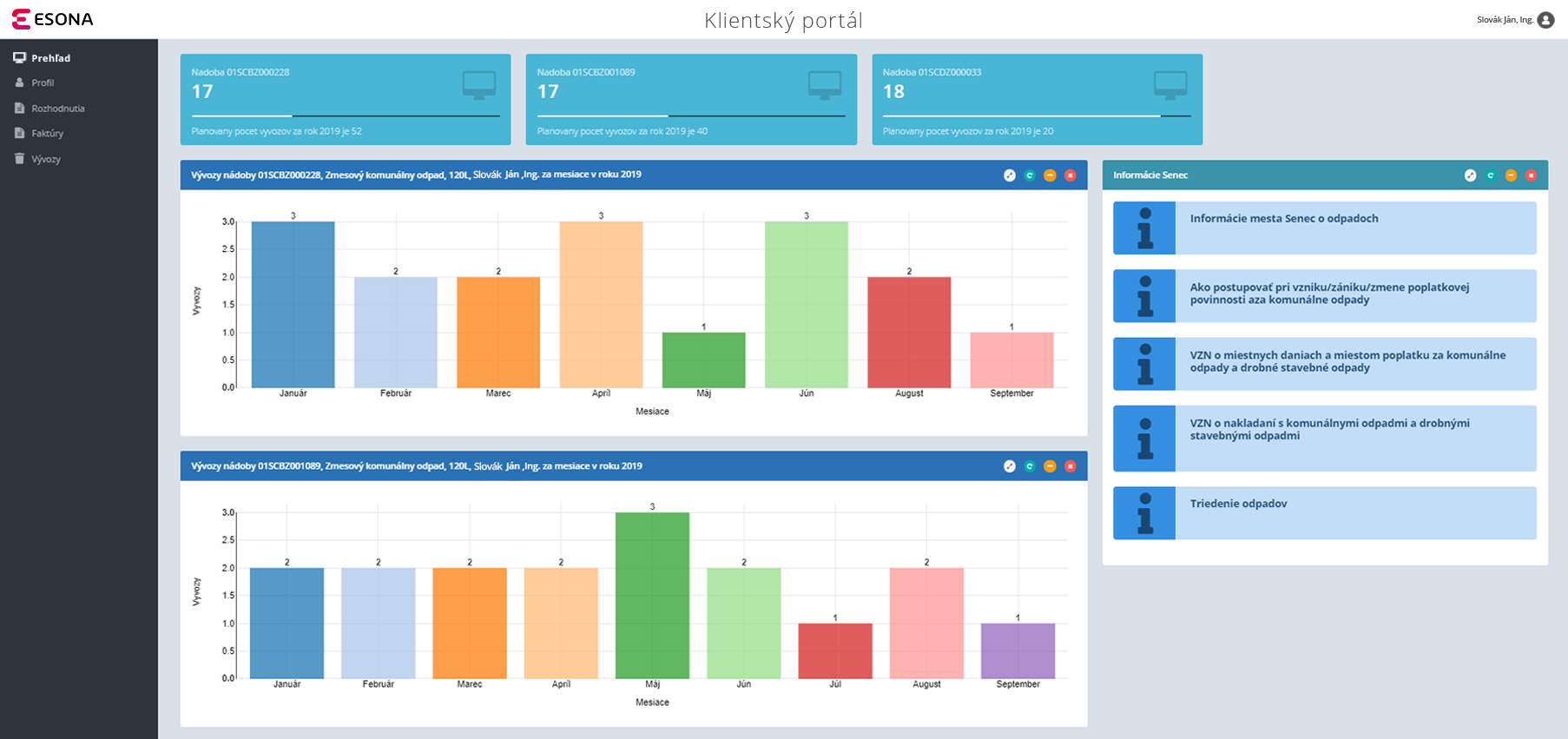
ESONA Client Portal
Waste collection companies will have a relevant basis for objective invoicing to the municipality. The waste container emptying is monitored directly in the field using the device installed on collection vehicles. Loading the chip is accompanied by an acoustic and visual notification and all information is automatically transmitted to the central system.
If it is necessary to record an irregularity during waste collection, the worker can record in the mobile application, for example, unauthorized waste, unavailable container, blocked street, incorrect container volume, collected larger amount of waste, or missing or damaged chip. These incorrect conditions complicate or completely prevent waste collection and their recording will prevent future complications in waste collection complaints.
The administrator of the waste collection company can monitor container emptying and manage exceptions online. The transparency of services will increase and the need to resolve complaints from the municipality, as well as complaints from fee payers, will be minimized.
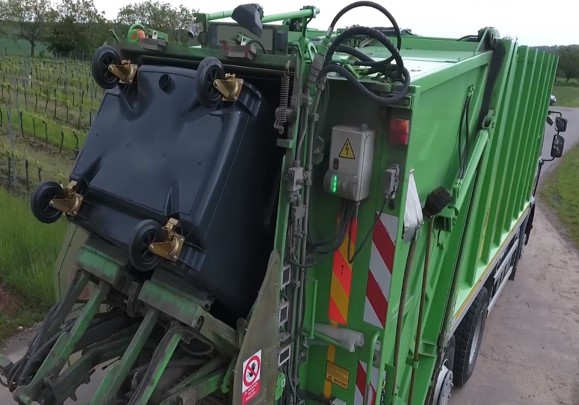
RFID chip reader located on the vehicle
ESONA offers cost-effective waste container management and waste collection performance. Towns and villages will have an accurate overview of collected volumes of waste from individual fee payers. They are thus able to charge targeted waste payments according to the quantity actually collected. Fee payers are motivated to reduce the total volume of municipal waste by its more thorough separation. Waste collection complaints are minimized and everyone will know what they are paying for.
